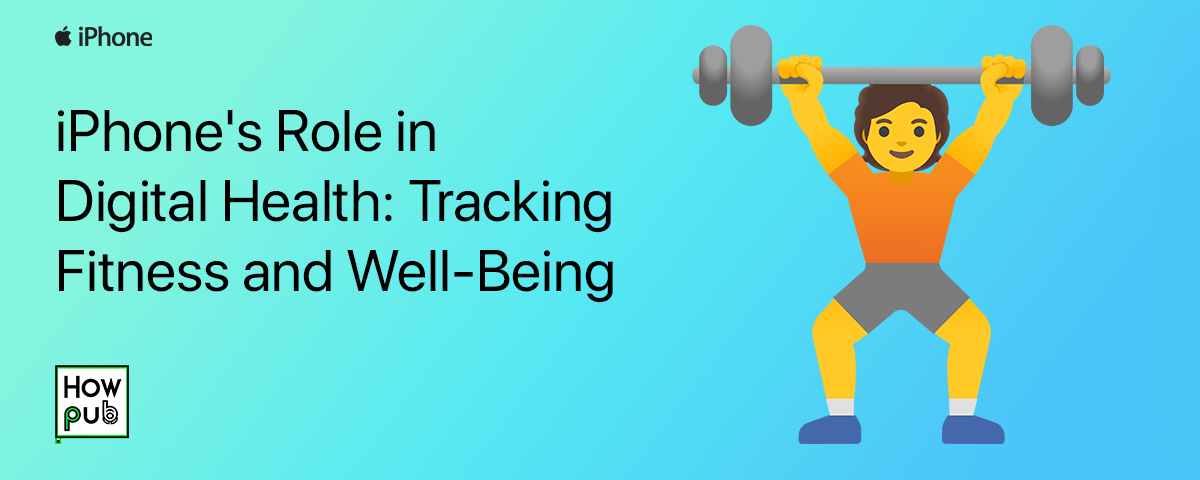In recent years, the iPhone has evolved from a powerful communication device into a critical tool for managing digital health. Whether you're trying to improve your physical fitness, monitor mental well-being, or keep track of daily health metrics, iPhones offer a suite of features that cater to a holistic health approach. In this guide, we’ll explore how iPhones support health tracking and well-being through apps, sensors, and the Health app.
1. The Health App: A Central Hub for Your Wellness
The Health app on iPhone is the central repository for your health data, collecting information from various sources such as fitness apps, wearables like the Apple Watch, and other connected devices. It can track an impressive array of metrics, including activity levels, heart rate, sleep patterns, and mindfulness sessions.
Key Features of the Health App:
- Activity Tracking: Monitors your daily steps, distance walked, and active calories burned.
- Heart Health: Tracks heart rate variability, resting heart rate, and integrates data from ECG-capable devices like the Apple Watch.
- Sleep Analysis: Monitors sleep duration and quality through apps like AutoSleep or Sleep Cycle.
- Mindfulness: Logs mindfulness activities such as breathing exercises and meditation.
- Health Records: Integrates with healthcare providers to pull lab results, immunization records, and other clinical data into one place.
Customizing the Health Dashboard:
To make the Health app more personalized:
- Open the Health app and go to the Summary tab.
- Tap Edit next to Favorites.
- Add or remove metrics like activity, sleep, or heart rate to focus on the data most relevant to you.
2. Tracking Fitness with the iPhone
The iPhone, combined with the Apple Watch, offers some of the most advanced fitness tracking capabilities available in a smartphone. Even without an Apple Watch, the iPhone can monitor your physical activity through built-in sensors like the accelerometer and GPS.
Fitness Tracking with the iPhone:
- Steps & Distance: The iPhone's accelerometer tracks your daily steps and distance traveled. You can view this data within the Health app or through apps like Pacer or Google Fit.
- Calorie Burn: Apps like MyFitnessPal and Lose It! use iPhone data to estimate daily calorie expenditure and help users stay on top of their weight loss or fitness goals.
- Workout Tracking: Use apps like Nike Training Club or Fitbod to guide workouts, track progress, and sync data with the Health app for better integration.
3. The Role of the Apple Watch in Fitness and Well-Being
While the iPhone tracks basic fitness metrics, the Apple Watch brings digital health to a whole new level. The Apple Watch is equipped with multiple sensors, including an optical heart rate sensor, an electrical heart sensor (for ECG), and a blood oxygen monitor. It also includes features like fall detection, which is particularly beneficial for older users or those with specific medical conditions.
Apple Watch's Health Features:
- Heart Rate Monitoring: Continuously tracks heart rate during workouts and daily activities. The Apple Watch will notify you if it detects an unusually high or low heart rate.
- ECG Functionality: Can take an electrocardiogram (ECG) to detect signs of atrial fibrillation, a heart condition that can lead to stroke.
- Blood Oxygen Monitoring: Provides a snapshot of your blood oxygen levels, which can indicate how well your body is absorbing oxygen.
- Sleep Tracking: The watch automatically tracks sleep duration and quality, helping you improve your rest habits.
- Activity Rings: Visualize your movement goals with the Move, Exercise, and Stand rings to stay motivated.
How to Sync Apple Watch Data with iPhone:
- Pair your Apple Watch with your iPhone by following the on-screen instructions during setup.
- Open the Health app on your iPhone, and ensure that Apple Watch is selected as one of your data sources.
- Your workout and health data will automatically sync between the two devices.
4. Mental Well-Being: Mindfulness and Relaxation
In addition to physical fitness, the iPhone offers features that support mental well-being. Apps like Calm, Headspace, and Breathe help users practice mindfulness, meditate, and manage stress effectively. The Mindfulness feature on the Apple Watch also integrates with the Health app, allowing users to track breathing exercises and moments of calm throughout the day.
Best Apps for Mental Well-Being:
- Calm: Offers guided meditations, breathing exercises, and sleep stories.
- Headspace: Focuses on mindfulness and meditation, offering structured programs for stress and anxiety management.
- Breathe: The built-in Breathe app on the Apple Watch guides you through mindful breathing exercises.
- Daylio: Tracks mood and provides insight into mental health trends over time.
By incorporating regular mindfulness practices and tracking mood patterns, iPhones and Apple Watches help users manage stress and improve overall mental health.
5. Advanced Health Monitoring: ECG, Blood Oxygen, and More
For those with specific health concerns, iPhones paired with Apple Watches can offer advanced health monitoring. The ECG and Blood Oxygen apps are particularly useful for individuals who need to track heart health or monitor oxygen saturation levels.
ECG Functionality:
- The Apple Watch can generate a detailed ECG, detecting irregular heart rhythms that could be a sign of atrial fibrillation.
- How to Use It: Open the ECG app on the Apple Watch, rest your finger on the Digital Crown, and wait for the 30-second test to complete.
Blood Oxygen Monitoring:
- The Blood Oxygen app measures the oxygen saturation (SpO2) in your blood, offering insights into respiratory health.
- How to Use It: Open the Blood Oxygen app on your Apple Watch and remain still while the watch takes a reading.
6. Health Data Privacy and Sharing
Apple has placed a strong emphasis on privacy when it comes to health data. Users can control which apps and services have access to their health information. Additionally, the Health app offers the ability to share data with healthcare providers, allowing for remote monitoring or streamlined communication during appointments.
How to Control Data Privacy:
- Open the Health app and tap Summary.
- Scroll down to Privacy and tap Apps to see which apps have access to your health data.
- Enable or disable sharing for each app.
Conclusion
The iPhone, in conjunction with apps and devices like the Apple Watch, plays a pivotal role in modern digital health. From fitness tracking to mindfulness and advanced health monitoring, iPhones offer a comprehensive platform for managing both physical and mental well-being. Whether you're just starting a fitness journey or looking to stay on top of your health, the iPhone has the tools you need to live a healthier, more connected life.
With customizable health metrics, advanced sensors, and a focus on privacy, your iPhone is a valuable companion in managing your overall well-being.
This guide illustrates how your iPhone can be leveraged as a powerful tool for tracking fitness, mental well-being, and advanced health metrics, all while ensuring privacy and ease of use. Explore the available features to unlock the full potential of your device for your health journey!



